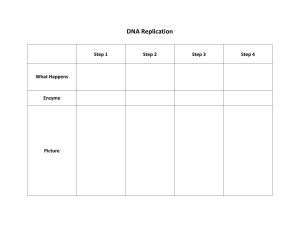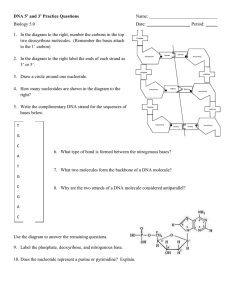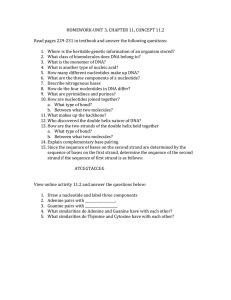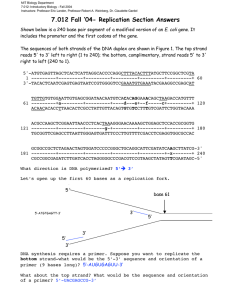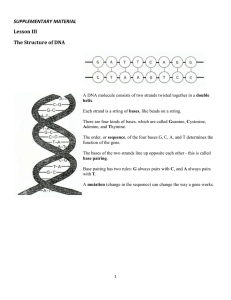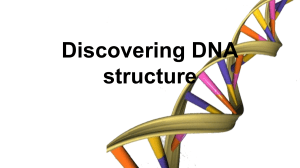DNA Vocabulary
advertisement
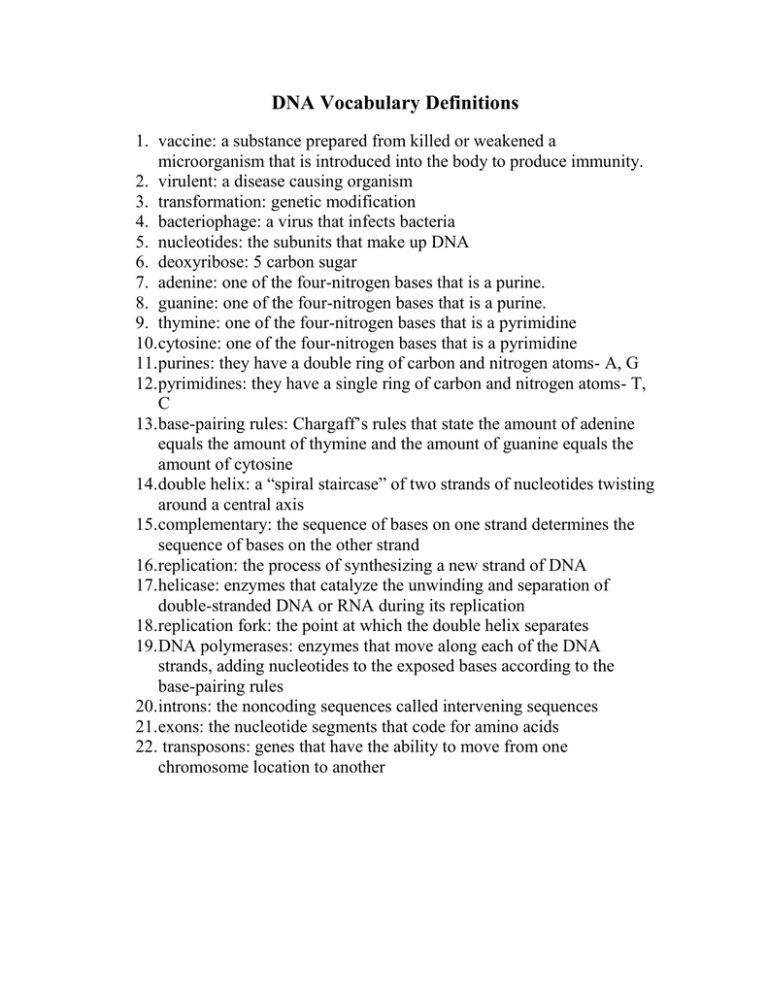
DNA Vocabulary Definitions 1. vaccine: a substance prepared from killed or weakened a microorganism that is introduced into the body to produce immunity. 2. virulent: a disease causing organism 3. transformation: genetic modification 4. bacteriophage: a virus that infects bacteria 5. nucleotides: the subunits that make up DNA 6. deoxyribose: 5 carbon sugar 7. adenine: one of the four-nitrogen bases that is a purine. 8. guanine: one of the four-nitrogen bases that is a purine. 9. thymine: one of the four-nitrogen bases that is a pyrimidine 10.cytosine: one of the four-nitrogen bases that is a pyrimidine 11.purines: they have a double ring of carbon and nitrogen atoms- A, G 12.pyrimidines: they have a single ring of carbon and nitrogen atoms- T, C 13.base-pairing rules: Chargaff’s rules that state the amount of adenine equals the amount of thymine and the amount of guanine equals the amount of cytosine 14.double helix: a “spiral staircase” of two strands of nucleotides twisting around a central axis 15.complementary: the sequence of bases on one strand determines the sequence of bases on the other strand 16.replication: the process of synthesizing a new strand of DNA 17.helicase: enzymes that catalyze the unwinding and separation of double-stranded DNA or RNA during its replication 18.replication fork: the point at which the double helix separates 19.DNA polymerases: enzymes that move along each of the DNA strands, adding nucleotides to the exposed bases according to the base-pairing rules 20.introns: the noncoding sequences called intervening sequences 21.exons: the nucleotide segments that code for amino acids 22. transposons: genes that have the ability to move from one chromosome location to another
